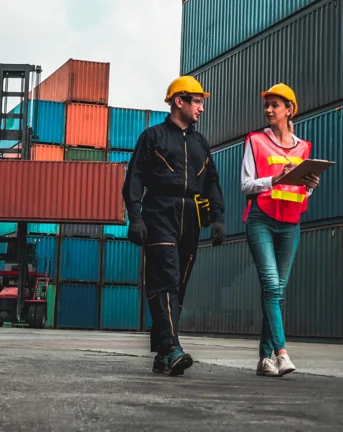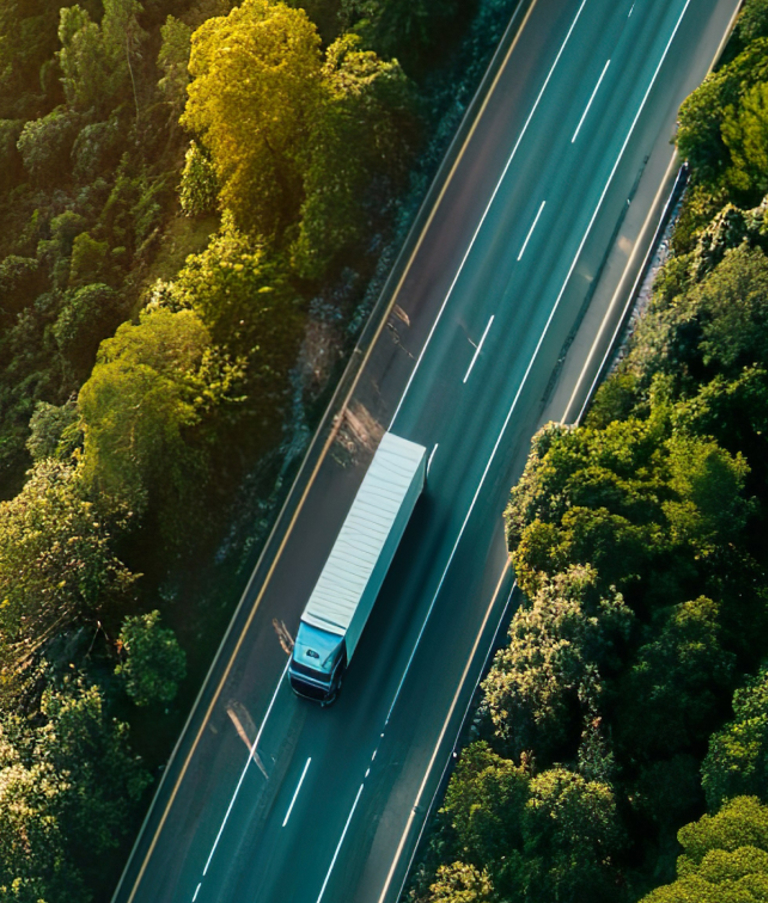In the logistics industry, artificial intelligence has moved beyond the buzz. It is the driving force behind sustainable change, helping companies rethink how they operate as they respond to increasing pressure from both regulators and environmentally conscious customers.
This pressure is familiar ground for Aslak Aarset Talleraas, Head of Client Relations in Norway at 7N, who works closely with businesses facing digital disruption. Aslak specializes in helping companies adopt emerging technologies like AI to improve operational resilience and sustainability across the value chain. We sat down with him to get his perspective on how AI is shaping the future of logistics and what it really takes to move from aspiration to action. His insights throughout this piece offer a grounded, pragmatic view of what it means to build a logistics model that is smarter, cleaner, and more profitable.

While cost reduction remains a primary motivator, the long-term value of AI lies in its ability to optimize energy use, reduce emissions, and unlock new models of circularity in supply chains.
Transport accounts for nearly 29% of all EU greenhouse gas emissions, with road transport alone responsible for more than 70% of that total1. As a core component of the logistics industry, transport represents the largest share of logistics-related emissions, with warehousing, inventory, and other supply chain activities also contributing to the sector’s overall environmental footprint. The EU has set a target to become the first climate-neutral continent by 2050, which places greater pressure on logistics companies to adopt technologies that reduce their environmental footprint while maintaining operational efficiency.

Let us have a look at some of the most promising ways AI is already helping reduce emissions and waste across the logistics chain.

Route Optimization Based on Real-Time Data
AI can analyze traffic, weather, shipment urgency, and road conditions to calculate the most efficient routes. As noted by Maersk, one of the world’s largest shipping companies, AI-powered route planning can reduce emissions by lowering travel time, idle time, and fuel consumption2.

Smarter Onloading and Offloading
Ports and distribution hubs are notorious for inefficiencies. According to research, AI-driven automation in onloading and offloading can optimize cargo placement and reduce port time, leading to lower emissions, fuel use, and costs3.

Energy Optimization in Logistics Facilities
Beyond vehicles, AI can reduce emissions inside warehouses and logistics hubs by optimizing energy usage for heating, cooling, and lighting based on real-time occupancy and demand4. This data-driven approach significantly lowers electricity consumption and costs.

Demand Prediction and Inventory Control
The rise of big data allows companies to anticipate customer needs with greater accuracy. AI helps optimize inventory levels, limiting overproduction and reducing unnecessary storage and transport, which in turn lowers emissions and waste across the supply chain.

Supporting a Circular Economy
AI can also assist in identifying reuse and recycling opportunities within supply chains. When businesses track the full life cycle of their materials, they can uncover opportunities to reuse and repurpose, reducing waste and getting more value out of resources, which are key steps toward a circular economy.
Challenges facing small & mid-sized companies
While large companies like Maersk, FedEx, DHL, and Amazon are quickly adopting AI, many small and mid-sized logistics businesses are struggling to keep up. Small businesses in logistics often lack the infrastructure to implement AI solutions, citing challenges like fragmented data, limited budgets, and unclear ROI. As Aslak added, many smaller companies “have limited technical knowledge of how to even approach AI.” He described a common scenario: “Their IT manager is also the CFO, the infrastructure lead, and the HR manager. They do not have the organization or budget to apply AI effectively.”
Limited access to digital tools, technical expertise, and long-term strategy continues to hold smaller logistics companies back. That is a problem since these smaller companies still make up a big part of the sector’s transport-related emissions.
Policy interventions may have a role to play in addressing this issue. Aslak noted that governments could set digital readiness requirements or sustainability standards to help guide the sector forward. However, he also pointed out that without offering the proper support, such policies could increase operational costs. As a result, these requirements may not lead to meaningful transformation but instead cause smaller companies to be acquired by larger ones.

As logistics systems become increasingly digitized, cybersecurity risks are on the rise, especially in maritime shipping. AI systems require secure design and strict access controls. A report by USCCG notes that cyberattacks in logistics have increased by 400 percent over the last decade, underlining the importance of responsible implementation6.
As AI becomes more embedded in critical infrastructure, companies must take a proactive approach to secure design and governance. Additionally, the EU AI Act, adopted in 2024, introduces a framework to regulate high-risk AI use cases, including those in transportation and logistics7.
Companies will need to demonstrate that their systems are safe, explainable, and aligned with ethical standards. This is a complex task that requires advanced know-how and extensive resources. As Aslak noted, “although automation of processes can help improve transparency across the supply chain, making it easier to track and report progress, most companies will not have the internal resources to handle secure AI deployment and will need to rely on external consultants to ensure safety and compliance.“
Aligning innovation with environmental responsibility
Artificial Intelligence will not solve the sustainability challenges in logistics on its own. It can support smarter decisions, cleaner operations, and more efficient use of resources; however, progress also depends on strong leadership, industry collaboration, and a long-term commitment to change. Cleaner energy, modern infrastructure, and redesigned systems must work alongside intelligent technologies to create lasting impact.
With the logistics sector central to the EU’s Green Deal vision for climate neutrality by 2050, companies that invest in innovation, adopt sustainable practices, and respond to shifting expectations will be in a stronger position for the future8. Taking action now can help organizations meet environmental goals and contribute to the global transition toward responsible trade.
Achieving lasting change requires making sustainable practices both practical and accessible. While AI can provide valuable insights, its impact depends on how well businesses understand and implement those insights. As Aslak points out, adoption will be shaped more by cost and uncertainty than by the technology itself.

Reach out to Aslak to learn more about how 7N helps logistics leaders adopt AI-powered solutions that drive sustainability and profitability.
References:
1. European Environment Agency. (2023). Greenhouse gas emissions from transport.
2. Maersk Insights. (2023). How AI improves efficiency and reduces emissions in logistics.
3. International Journal of Production Research. (2021). AI and automation in port operations.
4. Maersk Insights. (2023). How AI improves efficiency and reduces emissions in logistics.
5. Invest in Denmark. (2023). Green shipping in Denmark: The electric ferry Ellen.
6. USCCG Blog. (2023). Cybersecurity in maritime logistics.
7. European Parliament. (2023). EU AI Act and its implications for high-risk AI systems.
8. European Commission. (2023). The European Green Deal: Climate-neutral Europe by 2050.
Cases, insights & courses
Explore related cases and articles or discover new topics.






